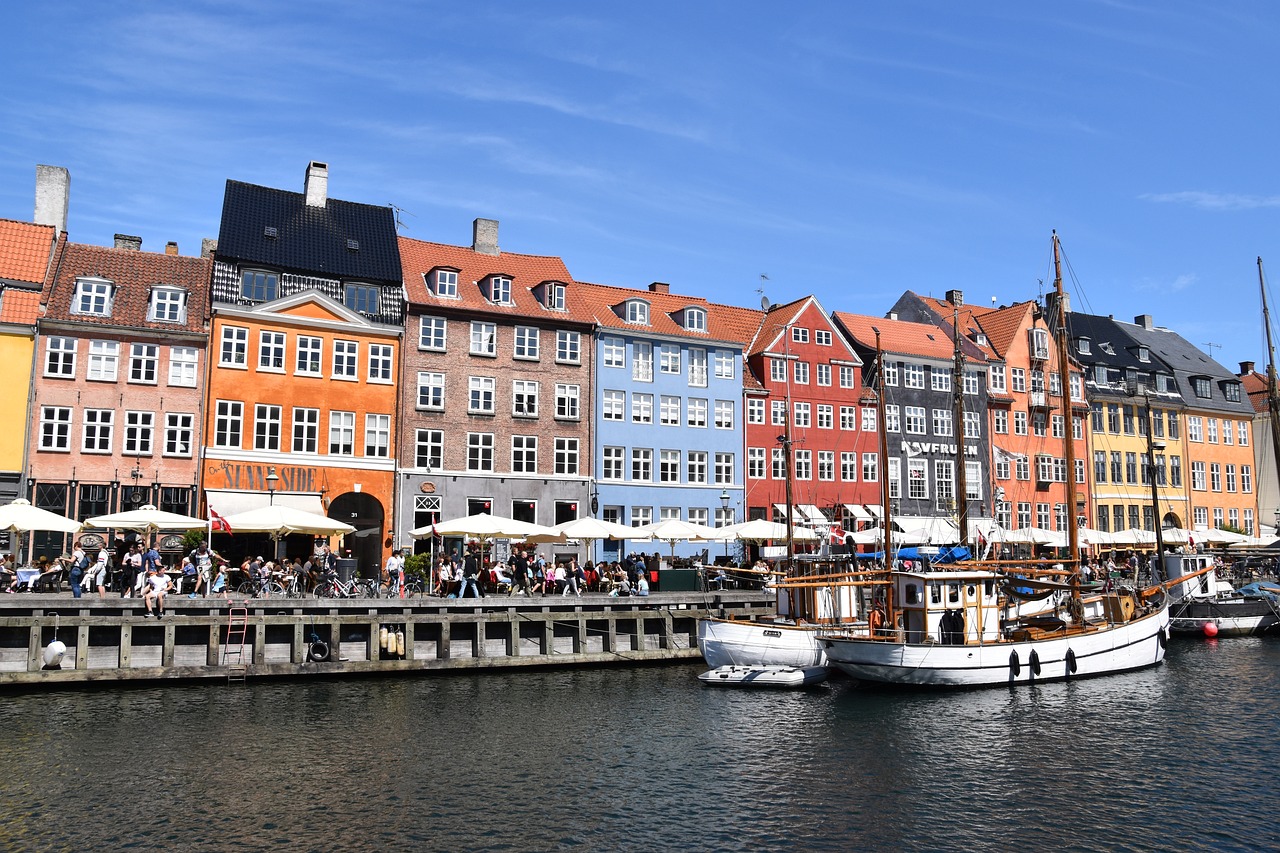The Best Time to Visit Denmark: A Comprehensive Guide
Introduction
With its rich history, beautiful landscapes, and an array of cultural attractions, Denmark has something to offer visitors year-round. But, just like any destination, certain times of the year may suit your travel preferences better. This guide will help you understand when might be the best time to visit Denmark based on various factors such as weather, crowd size, and local events.
Spring (March – May)
Spring is a delightful time to visit Denmark. As temperatures begin to rise, so does the beauty of Denmark’s landscape. Flowers bloom across the parks, and people start to spend more time outdoors.
| Month | Average High/Low Temperature |
|---|---|
| March | 6°C/1°C |
| April | 11°C/3°C |
| May | 16°C/7°C |
Tip: In early May, the Danish royal palaces and gardens start opening to the public, offering a great opportunity to enjoy Denmark’s royal history in a lovely setting.
Summer (June – August)
Summer is the peak tourist season in Denmark. The weather is typically warm but not hot, making it ideal for outdoor activities. This is also when Denmark hosts a range of music and food festivals.
| Month | Average High/Low Temperature |
|---|---|
| June | 20°C/12°C |
| July | 22°C/14°C |
| August | 21°C/14°C |
Tip: Don’t miss the midsummer celebrations in late June, especially ‘Sankt Hans Aften’ (St. John’s Eve), where you can enjoy bonfires on the beach, sing-along, and traditional speeches.
Autumn (September – November)
Autumn in Denmark is characterized by cooler temperatures and vibrant fall foliage. It’s a fantastic time to explore Denmark’s forests and national parks.
| Month | Average High/Low Temperature |
|---|---|
| September | 17°C/10°C |
| October | 12°C/7°C |
| November | 7°C/3°C |
Tip: Try to visit during the ‘Kulturnatten’ (Culture Night) in mid-October in Copenhagen, where museums, theaters, and even the parliament open their doors to the public with special events.
Winter (December – February)
Winter in Denmark can be quite cold, but the holiday season brings a certain charm. Denmark is famous for its Christmas markets, making it a magical place to visit despite the chill.
| Month | Average High/Low Temperature |
|---|---|
| December | 4°C/1°C |
| January | 3°C/-1°C |
| February | 3°C/-1°C |
Tip: Warm yourself with a glass of traditional Danish ‘Gløgg’ (mulled wine) while exploring the Christmas markets.
Local Danish Delicacies: Savour and Season
One cannot possibly talk about visiting Denmark without mentioning the delightful Danish cuisine.
Depending on when you choose to visit, you might find different local foods dominating the menus.
Spring
Spring is the season when new vegetables start to sprout, and this is reflected in Danish cuisine. Look for dishes featuring fresh asparagus, radishes, and the much-coveted Danish peas.
Tip: ‘Stjerneskud’ or the Shooting Star is a traditional open-faced sandwich you should try. This dish is usually enjoyed more during the spring and summer months.
Summer
The Danish summer is all about being outdoors and this is reflected in the food as well. Danish people love their barbecues, and summer is the perfect time to enjoy a ‘grillfest’ (BBQ party) or a picnic in one of the many parks.
Tip: Don’t miss out on tasting ‘Koldskål’, a cold sweet soup made with buttermilk, eggs, sugar, vanilla, and lemon, usually served with ‘Kammerjunker’ (small sweet rusks).
Autumn
Autumn is the season of harvest. It’s the perfect time to enjoy the new potatoes, apples, plums, and a variety of wild mushrooms.
Tip: ‘Æbleflæsk’, a traditional dish of apples, pork, and onions, is especially enjoyed during the autumn months.
Winter
During the cold winter months, heartier dishes are on the menu. These include ‘Flæskesteg’ (roast pork with crackling) and ‘Risalamande’ (rice pudding), traditionally served at Christmas.
Tip: Be sure to taste ‘Gløgg’, a traditional Scandinavian mulled wine served hot, often with almonds and raisins.
Frequently Asked Questions
- What is a traditional Danish breakfast? A traditional Danish breakfast often includes ‘Rugbrød’ (rye bread), cheese, cold cuts, yogurt, and a variety of jams. It’s often enjoyed with coffee or tea.
- What’s the traditional Danish lunch? Lunch in Denmark often consists of ‘Smørrebrød’ – open-faced sandwiches on rye bread, topped with a variety of ingredients like cold cuts, fish, cheese, and spreads.
- Are vegetarian/vegan options common in Denmark? Yes, Denmark is quite accommodating for vegetarians and vegans, especially in bigger cities like Copenhagen. There’s a growing trend of plant-based eating, and you can find many restaurants offering delicious vegetarian and vegan options.
- When is the best time to visit Denmark for good weather? If you prefer warm, pleasant weather, the summer months (June-August) are the best time to visit Denmark.
- When is the best time to visit Denmark to avoid crowds? If you’d like to avoid the peak tourist season, consider visiting in the shoulder seasons – Spring (March-May) and Autumn (September-November).
- When is the best time for budget travelers to visit Denmark? For budget travelers, the winter months (December-February) can be a good time to visit, as accommodation prices are typically lower. However, keep in mind that winter in Denmark can be quite cold.
Conclusion
Ultimately, the best time to visit Denmark depends on your personal preferences and what you want to experience. No matter when you decide to visit, Denmark’s charm and diverse attractions ensure an unforgettable trip.
When Is the Best Time to Visit Denmark?
The Quick Answer
The best time to visit Denmark is during the late spring to early autumn, stretching from May to September. This period offers the best combination of pleasant weather, fewer crowds, and a bouquet of activities.
The Seasons Unveiled
Spring (April to June)
Spring is when Denmark starts shaking off its winter blues. Flowers bloom, café terraces fill up, and the Tivoli Gardens in Copenhagen reopen. Ah, the aroma of fresh coffee mingling with cherry blossoms is something else!
Summer (July to August)
Summer is like Denmark’s blockbuster season. You’ve got long days, warm temperatures, and the locals in high spirits. Ideal for beach trips and island hopping. Yet, beware! It’s also peak tourist season.
Autumn (September to November)
Autumn can be a mixed bag but in a good way. The weather is generally mild, but the scenery? Drop-dead gorgeous. Imagine forests with leaves in hues of golden brown, orange, and yellow, like Mother Nature’s own canvas.
Winter (December to March)
If you’re a fan of winter sports or the magical allure of Christmas markets, winter has its own charm. But let’s not kid ourselves; it’s cold, wet, and the days are short.
Pros and Cons: A Quick Look
| Season | Pros | Cons |
|---|---|---|
| Spring | Mild weather, less crowded | Unpredictable weather |
| Summer | Warm, long days | Crowded, pricier |
| Autumn | Scenic beauty | Rainy days |
| Winter | Christmas vibe | Cold, short days |
Specific Recommendations
- Copenhagen in May: Fewer tourists and lots of outdoor activities.
- Bornholm in July: Ideal for beach lovers.
- Odense in September: Experience the Hans Christian Andersen Festival.
- Aarhus in October: Witness the Aarhus Jazz Festival.
- Jutland in December: Explore Christmas markets and indulge in winter sports.
The Verdict
If you’re after sunny skies and outdoor fun, summer’s your best bet. But if you prefer avoiding crowds while still soaking in the essence of Denmark, late spring or early autumn will be right up your alley.
So there you have it. Pack your bags, grab your favorite travel companion, and let’s create memories that’ll last a lifetime. 🌍

